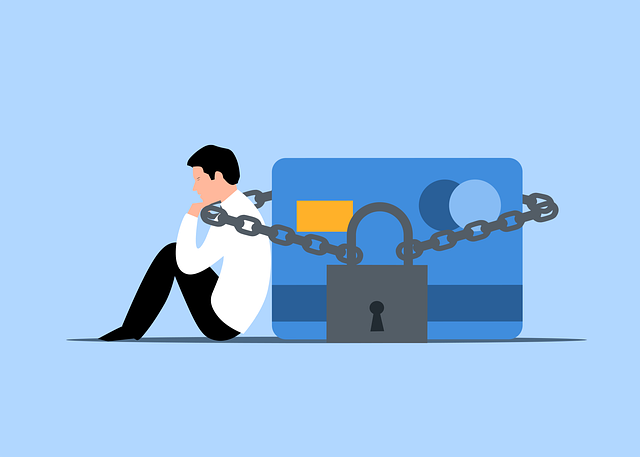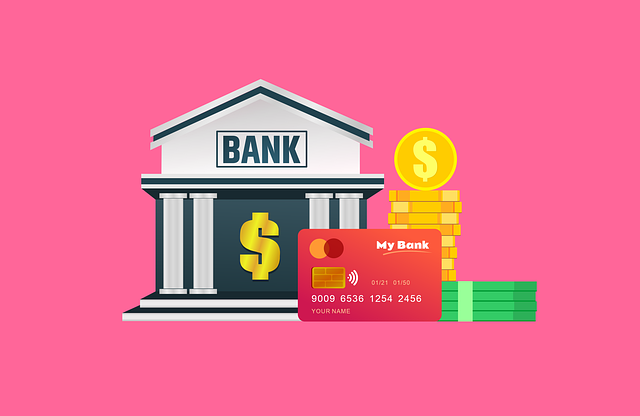High-risk borrowers with limited loan options from traditional lenders can find relief through various financial crisis solutions, including debt reduction plans, emergency debt assistance, and debt settlement programs. Loan consolidation options streamline repayment by combining multiple debts into one with lower interest rates, offering immediate and long-term benefits. These strategies help individuals regain financial control and pave the way for improved credit management.
Many individuals face financial challenges that categorize them as high-risk borrowers. This article offers a comprehensive guide for simplifying finances through various options tailored to this demographic. From understanding your high-risk status and its implications, we explore powerful tools like loan consolidation to merge debts for better management. We delve into short-term financial crisis solutions, long-term debt reduction plans, emergency assistance programs, and the pros/cons of debt settlement versus traditional consolidation.
- Understanding High-Risk Borrower Status: A Comprehensive Overview
- Loan Consolidation Options: Merging Debts for Better Management
- Financial Crisis Solutions: Short-Term Strategies for Immediate Relief
- Debt Reduction Plans: Long-Term Approaches to Pay Off Debts Efficiently
- Exploring Emergency Debt Assistance Programs: Immediate Help for Urgent Situations
- Debt Settlement Programs vs. Traditional Consolidation: Pros and Cons Compared
Understanding High-Risk Borrower Status: A Comprehensive Overview

High-risk borrower status is often a result of various financial challenges and can include individuals with poor credit scores, high debt-to-income ratios, or a history of missed payments. These factors make it difficult for them to secure traditional loans from banks or lenders. However, there are numerous options available to simplify finances and navigate through this challenging situation. One effective strategy is loan consolidation, which combines multiple debts into a single loan with potentially lower interest rates, making repayment more manageable.
Financial crisis solutions like debt reduction plans and emergency debt assistance programs can provide much-needed relief. Debt settlement programs, for instance, negotiate with creditors to reduce the overall balance owed, offering a potential quick fix for overwhelming debt. Additionally, seeking loans debt consolidation services from reputable organizations specializing in assisting high-risk borrowers can open doors to more accessible and affordable repayment plans, ultimately helping individuals regain control over their finances.
Loan Consolidation Options: Merging Debts for Better Management

For high-risk borrowers facing multiple debts, loan consolidation options offer a potential solution to simplify finances and navigate through financial crises. By merging various loans into a single debt with a lower interest rate, individuals can better manage their repayment obligations. This strategic approach not only simplifies billing cycles but also reduces the overall cost of borrowing over time. Emergency debt assistance programs and debt settlement programs are additional avenues high-risk borrowers can explore to implement effective debt reduction plans.
These initiatives provide financial crisis solutions tailored to unique circumstances, allowing borrowers to regain control over their finances. Loan debt consolidation, when executed properly, can alleviate the stress associated with multiple loan payments and open doors to better credit management in the future.
Financial Crisis Solutions: Short-Term Strategies for Immediate Relief

High-risk borrowers facing financial crises have several short-term strategies to gain immediate relief. One popular option is loan consolidation, which combines multiple loans into a single, more manageable debt with potentially lower interest rates. This approach can simplify repayment and free up cash flow, offering much-needed breathing room.
Another effective financial crisis solution involves exploring debt reduction plans like debt settlement programs. These programs negotiate with creditors to forgive a portion of the debt, providing quick relief but requiring careful consideration as it may impact credit scores. Emergency debt assistance organizations can also offer support, connecting borrowers with resources tailored to their unique situations.
Debt Reduction Plans: Long-Term Approaches to Pay Off Debts Efficiently

High-risk borrowers often find themselves in a financial crisis due to overwhelming debts. To simplify their finances and regain control, exploring long-term debt reduction plans is essential. These approaches focus on strategic repayment strategies that go beyond quick fixes. One popular option is loan consolidation, where multiple loans are combined into a single, more manageable one with potentially lower interest rates. This streamlines repayment by simplifying bills and reducing the overall cost of debt.
Financial crisis solutions like these provide much-needed relief, allowing borrowers to allocate their income more efficiently. Debt settlement programs and emergency debt assistance can also be viable options for those in dire straits. These programs negotiate with creditors on behalf of the borrower, aiming to reduce the total amount owed. While each method has its advantages, understanding the implications and eligibility criteria is crucial before committing. Effective debt reduction involves a thorough assessment of one’s financial situation and choosing the right strategy for long-term financial stability.
Exploring Emergency Debt Assistance Programs: Immediate Help for Urgent Situations

High-risk borrowers often face unique challenges when it comes to managing their finances due to a history of poor credit or other financial setbacks. Fortunately, there are various options available to help simplify their monetary situations and provide much-needed relief. One effective strategy is exploring emergency debt assistance programs designed specifically for those in urgent need. These programs offer immediate support by providing temporary financial aid during unforeseen circumstances.
Emergency debt assistance can take several forms, including short-term loans with flexible repayment terms or even debt settlement programs that negotiate with creditors on behalf of the borrower. Loan consolidation options are also valuable, combining multiple debts into a single, more manageable loan with potentially lower interest rates. By taking advantage of these financial crisis solutions, borrowers can gain a sense of control and work towards implementing long-term debt reduction plans.
Debt Settlement Programs vs. Traditional Consolidation: Pros and Cons Compared

When facing a financial crisis, high-risk borrowers often seek solutions to simplify their finances and manage overwhelming debt. Two popular strategies are debt settlement programs and traditional loan consolidation options. Each has its advantages and disadvantages, catering to different borrower needs.
Debt settlement programs offer a negotiated approach where lenders agree to accept a lower amount than the original loan balance in full settlement of the debt. This method provides significant savings on interest and monthly payments but may have negative impacts on credit scores as it can be reported as a default or collection item. On the other hand, traditional loan consolidation involves combining multiple debts into one new loan with a potentially lower interest rate, simplifying repayment terms. However, it might not reduce the overall debt as aggressively as settlement programs and could result in higher long-term costs if not managed carefully. Borrowers must weigh these pros and cons to make an informed decision that aligns with their financial recovery goals, especially considering the need for emergency debt assistance during challenging times.







